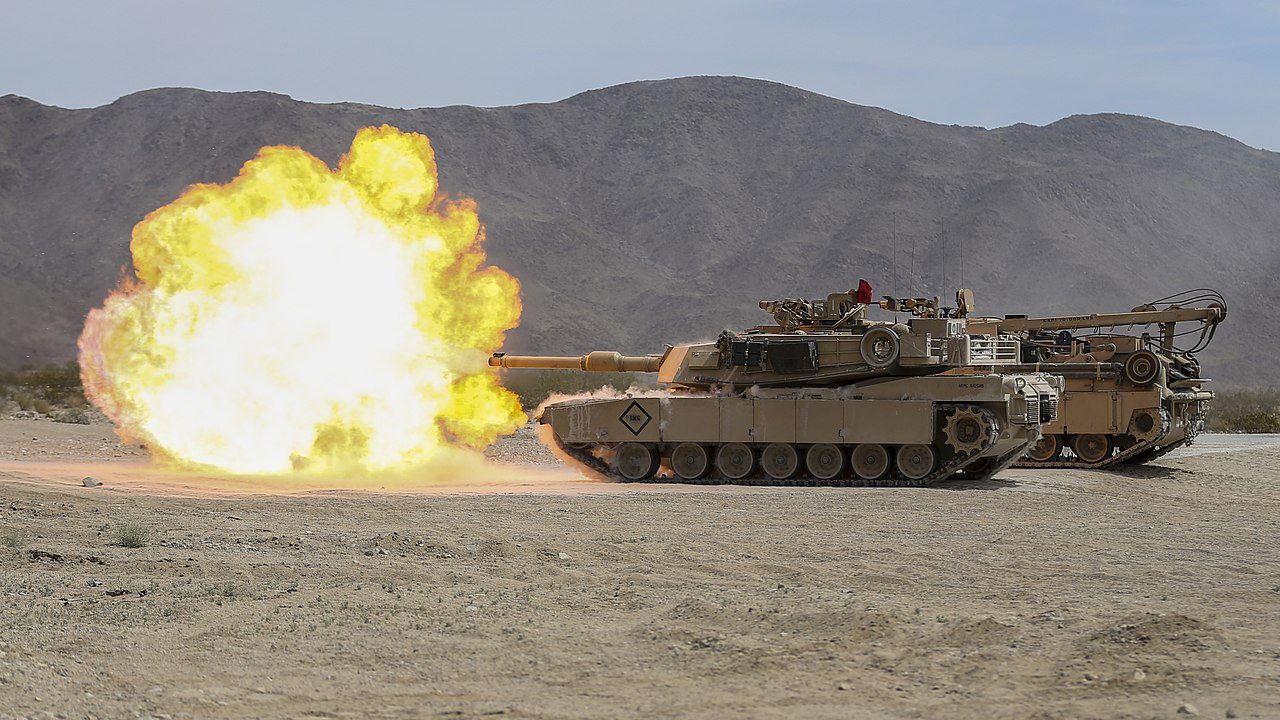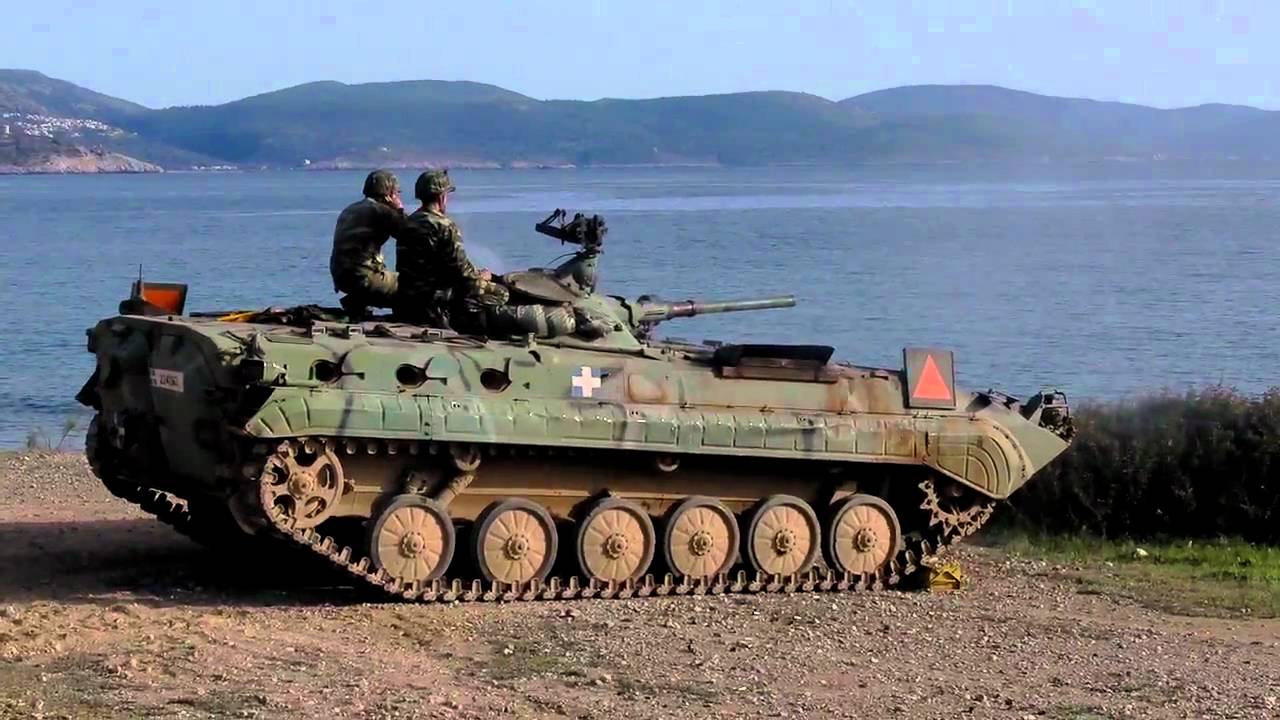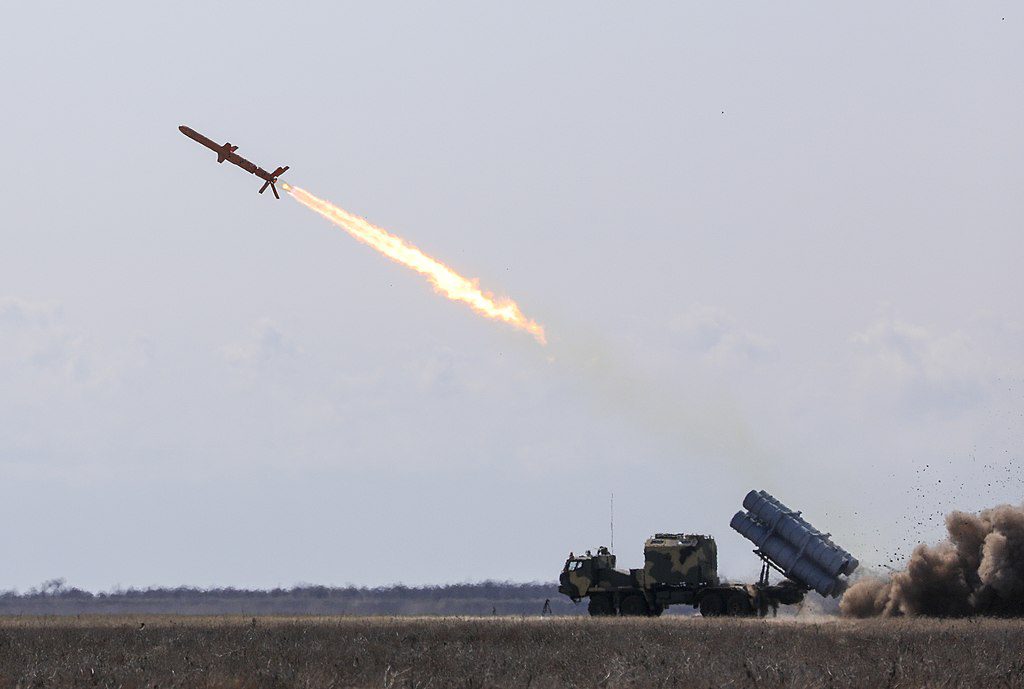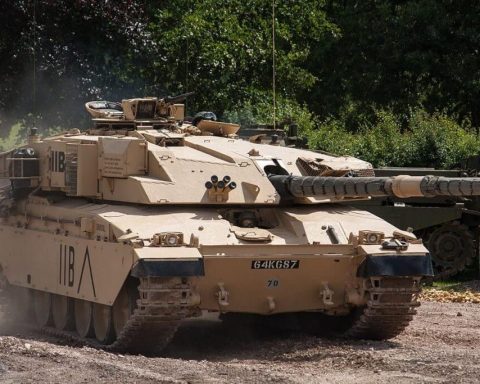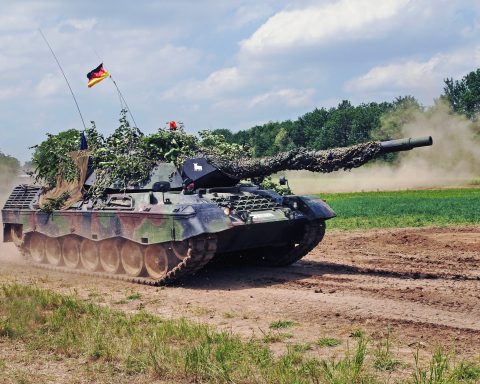The M1 Abrams is the American main battle tank (MBT). It is a third-generation tank named for General Creighton Abrams. It was designed and manufactured by Chrysler Defense (now General Dynamics Land Systems). M1 Abrams was designed for modern armored warfare, and it is one of the heaviest tanks in service.
Key recognition features
Nose slopes back under hull, almost horizontal glacis plate, driver’s hatch center under gun mantlet, turret center, raised engine compartment rear. Hull rear vertical with air louvers in the upper part
Large turret with an almost vertical front that slopes to the rear, hull sides slopes to the rear, hull side slope inwards with bustle extending well to the rear, stowage box and basket on each side of the turret towards the rear. Rectangular gunner’s sight on the right side of the turret roof forward of commander’s cupola externally mounted 12.7mm MG. 105mm gun has a fume extractor and muzzle reference system
Suspension on each side has seven road wheels, a drive sprocket rear, a large idler front, two return rollers—upper part of the suspension, idler, and most of the drive sprocket covered by armored skirts.
Development
After trials of XM1 prototypes built by Chrysler (now General Dynamics Land System Division) and General Motors, the tank was developed and eventually accepted for service as M1 Abrams MBT. The first production, M1 Abrams, was completed in 1980. Production was undertaken at the Lima Army Tank Plant, Ohio, and at the Detroit Arsenal Tank Plant, Sarren, Michigan, but production is now concentrated in Lima.
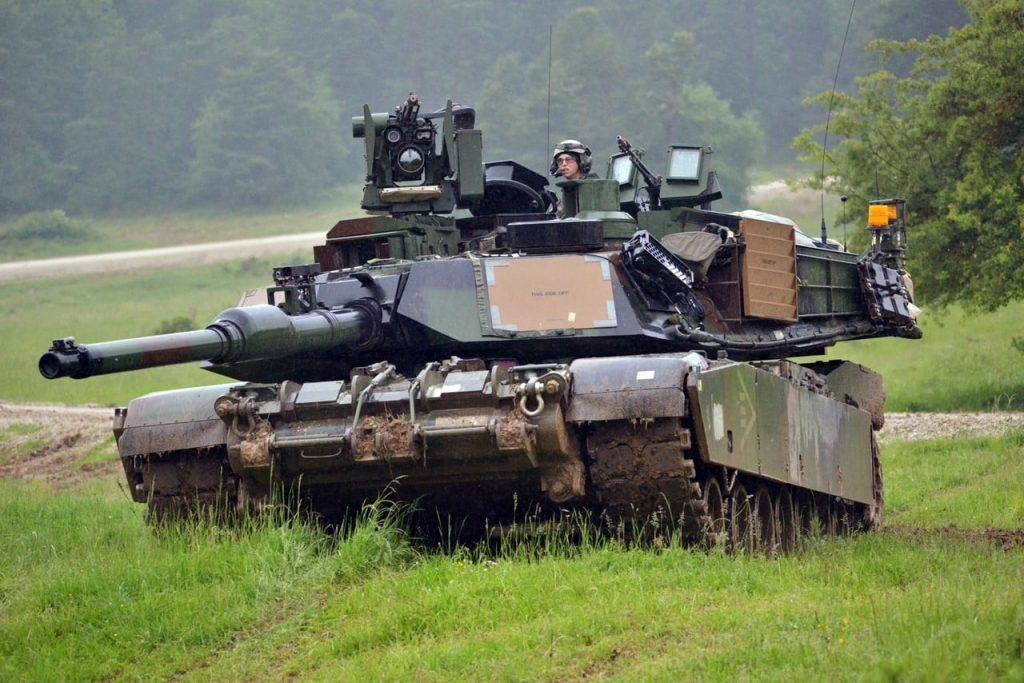
The M1 Abrams were followed in production by the improved M1 and then the M1A1 with 120mm gun and numerous other improvements. The final production model was the M1A2 built for Kuwait, Saudi Arabia, and the United States. Some M1s are being upgraded to M1A2 for US Army.
The layout is conventional, with the driver front, turret center, engine, and transmission rear. Commander and gunner sit on the right of the turret, loader on the left. Commander mans a roof-mounted 12.7mm MG, loader mans a 7.62mm roof-mounted MG.
The main armament comprises a 105mm M68 rifled gun with powered elevation from -9 degrees to +20 degrees and a turret traversing through 360 degrees. A 7.62mm MG is mounted coaxially to the right of the main armament, which is stabilized in elevation and traverse. The 105mm gun fires standard ammunition as well as APFSDS-T rounds.

Variants
- M1 Abrams – a basic vehicle with a 105mm gun, built from 1980 to 1985.
- Improved M1 Abrams – M1 Abrams with additional armor and built from 1984 to 1986.
- M1A1, many improvements, including 120mm smoothbore gun, late production vehicles include heavy armor package
- M1A2 has a 120mm gun, new armor, Commanders Independent Thermal Viewer (CITV), and a land navigation system.
- M1AVLB, at the prototype stage
- Combat Mobility Vehicle – under development by United Defense IP and based on modified M1 chassis.
- Abrams Recovery Vehicle was developed as a private venture; only a single prototype was built.
M1/M1A1/M1A2 can be fitted with the dozer or mine-clearing systems in front of the hull.
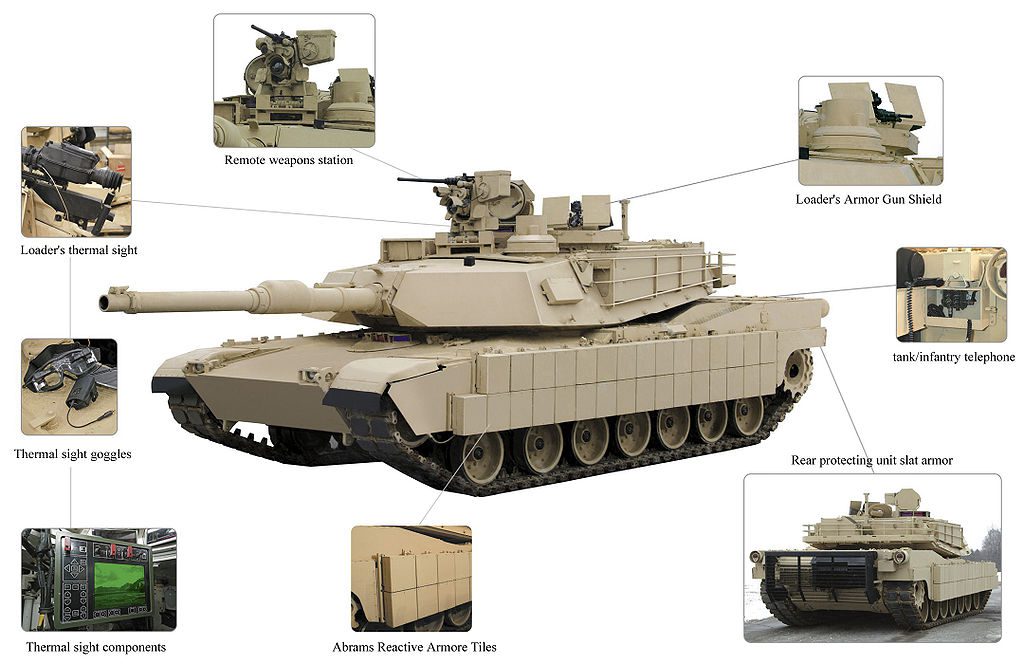
Status
- M1 Abrams – production completed; in service with US Army.
- M1A1 – production complete; in service with Egypt, US Army, and Marine Corps.
- M1A2 – production completed in 1996, in service with Kuwait, Saudi Arabia, and US Army (some M1 to be upgraded to M1A2 standard).
Combat use
M1 Abrams took part in every conflict the United States was involved in since 1991 and the Gulf War. Since then, many of them have been destroyed or knocked out of combat.
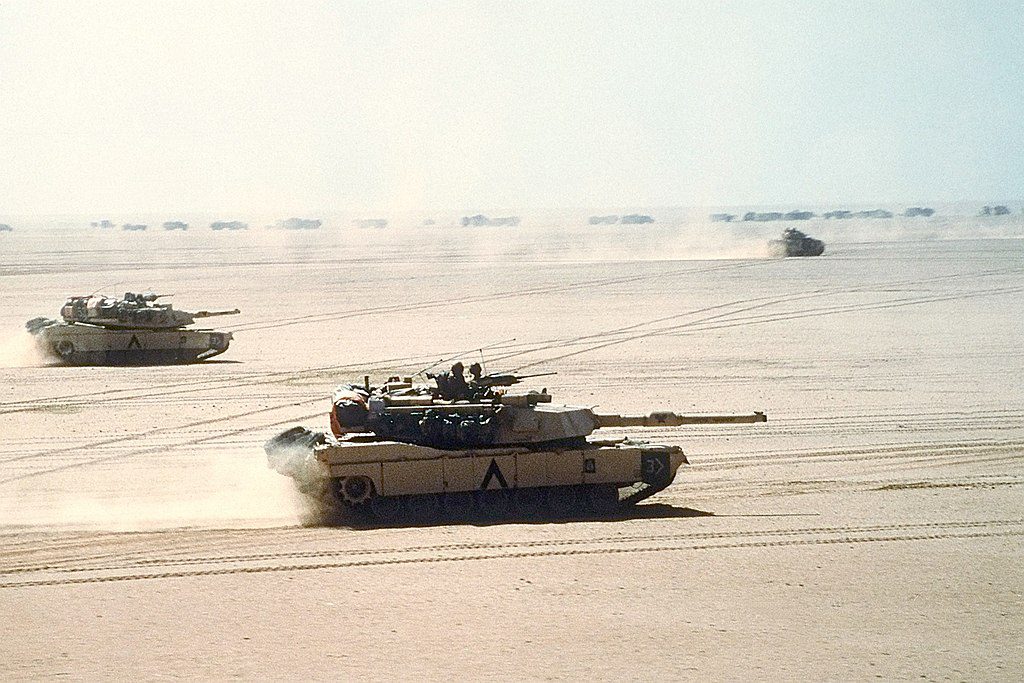
Lost in combat
The raw numbers are 553 Abrams tanks that have been taken out of combat. At least 14 of them were destroyed outright by enemy action. 23 M1A1s were destroyed in the Gulf War. This included seven friendly fires and two destroyed that had previously been disabled (to prevent them from falling into enemy hands).
Most were by mines or IEDs, and most were recovered and repaired. A relatively small number of ours were destroyed due to weapons fire. Still, some were destroyed by anti-aircraft gunfire and some disabled by RPG-7, recoilless rifle fire, etc., to the relatively vulnerable rear engine compartment or road wheels. The majority, however, are the export tanks that lack the Chobham armor of our M1s – we don’t export that. So a lot of the pictures you see are of Iraqi M1s.
As you will note, in all instances, however, none of our tanks were destroyed in a tank on tank engagements from enemy fire (some from friendly fire in Gulf War). Tanks are not invulnerable and still need infantry support to suppress the enemy infantry from getting behind the tanks. Still, all in all, I would rather be in an Abrams than anything else!
Manufacturer
General Dynamics Ltd, Land Systems Division, Lima Army Tank Plant, Lima, Ohio, assembled in Egypt.
Specifications (M1)
| Crew: | 4 |
| Armament: | 1 x 105mm, 1 x 7.62mm MG (coaxial), 1 x 7.62mm MG (AA), 1 x 12.7mm MG (AA), 2 x 6 smoke grenade dischargers |
| Ammunition: | 55 x 105mm, 1,000 x 12.7mm, 11,400 x 7.62mm |
| Length gun forwards: | 9.766m |
| Length hull: | 7.918m |
| Width: | 3.653m |
| Height to turret roof: | 2.375m |
| Height overall: | 2.885m |
| Ground clearance: | 0.482m |
| Weight, combat: | 54,545kg |
| Power-to-weight ratio: | 27hp/tonne |
| Engine: | Textron Lycoming AGT 1500 gas turbine developing 1,500hp at 30,000rpm |
| Maximum road speed: | 72.421km/hr |
| Maximum road range: | 498km |
| Fuel capacity: | 1,907 lit |
| Fording: | 1.219m, 1.98m (with preparation) |
| Vertical obstacle: | 1.244m |
| Trench: | 2.743m |
| Gradient: | 60% |
| Side slope: | 40% |
| Armor: | classified |
| Armor type: | laminate/steel |
| NBC system: | Yes |
| Night vision equipment: | Yes (passive for commander, gunner, and driver) |
